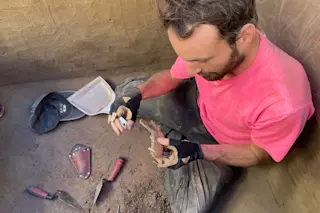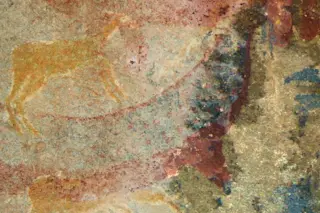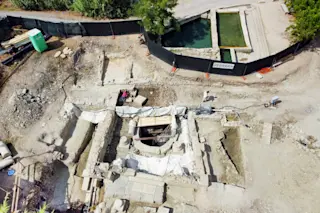44. Scorpion Was Here
An escarpment 20 miles northwest of Luxor, Egypt, is an unlikely place for a message center: Only the vast Sahara lies farther to the west. But in April, Egyptologists John Coleman Darnell and Deborah Darnell, a husband-and-wife team from Yale University, reported finding an ancient bulletin board there, a collection of notes carved in the rock face by travelers over the millennia—including what may be one of the world's oldest historical documents.
The story is told by an engraving on a three-foot-wide triangular limestone surface that dates to 3250 B.C. It depicts a ruler leading a procession back to the ancient city of Abydos after capturing the king of the rival state of Naqâda. A chiseled figure of a stork holding a serpent—imagery early Egyptians used to convey the triumph of order over chaos—immediately precedes the procession. According to John Darnell, the stork and serpent symbols ...














